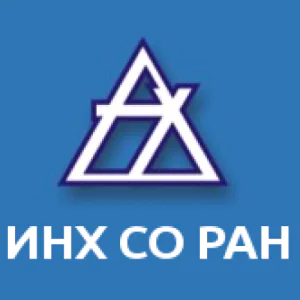
Iridium Complexes with BIAN-Type Ligands: Synthesis, Structure and Redox Chemistry
A series of iridium complexes with bis(diisopropylphenyl)iminoacenaphtene (dpp-bian) ligands, [Ir(cod)(dpp-bian)Cl] (1), [Ir(cod)(NO)(dpp-bian)](BF4)2 (2) and [Ir(cod)(dpp-bian)](BF4) (3), were prepared and characterized by spectroscopic techniques, elemental analysis, X-ray diffraction analysis and cyclic voltammetry (CV). The structures of 1–3 feature a square planar backbone consisting of two C = C π-bonds of 1,5-cyclooctadiene (cod) and two nitrogen atoms of dpp-bian supplemented with a chloride ion (for 1) or a NO group (for 2) to complete a square-pyramidal geometry. In the nitrosyl complex 2, the Ir-N-O group has a bent geometry (the angle is 125°). The CV data for 1 and 3 show two reversible waves between 0 and -1.6 V (vs. Ag/AgCl). Reversible oxidation was also found at E1/2 = 0.60 V for 1. Magnetochemical measurements for 2 in a range from 1.77 to 300 K revealed an increase in the magnetic moment with increasing temperature up to 1.2 μB (at 300 K). Nitrosyl complex 2 is unstable in solution and loses its NO group to yield [Ir(cod)(dpp-bian)](BF4) (3). A paramagnetic complex, [Ir(cod)(dpp-bian)](BF4)2 (4), was also detected in the solution of 2 as a result of its decomposition. The EPR spectrum of 4 in CH2Cl2 is described by the spin Hamiltonian Ĥ = gβHŜ with S = 1/2 and gxx = gyy = 2.393 and gzz = 1.88, which are characteristic of the low-spin 5d7-Ir(II) state. DFT calculations were carried out in order to rationalize the experimental results.
Top-30
Journals
|
1
2
3
|
|
|
New Journal of Chemistry
3 publications, 23.08%
|
|
|
Russian Journal of Coordination Chemistry/Koordinatsionnaya Khimiya
2 publications, 15.38%
|
|
|
Координационная химия
2 publications, 15.38%
|
|
|
Inorganic Chemistry
1 publication, 7.69%
|
|
|
Inorganica Chimica Acta
1 publication, 7.69%
|
|
|
Coordination Chemistry Reviews
1 publication, 7.69%
|
|
|
Molecular Catalysis
1 publication, 7.69%
|
|
|
Chemistry - An Asian Journal
1 publication, 7.69%
|
|
|
Inorganic Chemistry Frontiers
1 publication, 7.69%
|
|
|
1
2
3
|
Publishers
|
1
2
3
4
|
|
|
Royal Society of Chemistry (RSC)
4 publications, 30.77%
|
|
|
Pleiades Publishing
3 publications, 23.08%
|
|
|
Elsevier
3 publications, 23.08%
|
|
|
American Chemical Society (ACS)
1 publication, 7.69%
|
|
|
The Russian Academy of Sciences
1 publication, 7.69%
|
|
|
Wiley
1 publication, 7.69%
|
|
|
1
2
3
4
|
- We do not take into account publications without a DOI.
- Statistics recalculated weekly.











